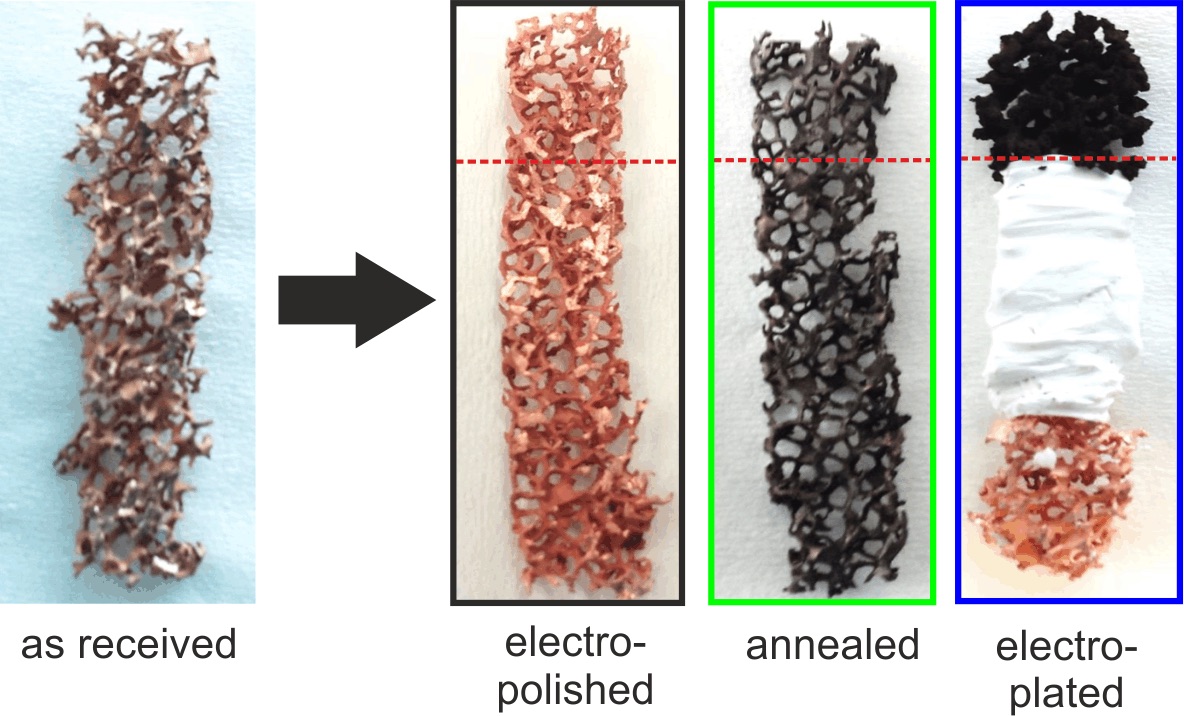CO2 Electro-reduction on three dimensional Cu skeleton catalysts
The electrochemical reduction of CO2 into products of higher value (in the following referred to as CO2RR) offers the unique chance to make a significant contribution to the closing of the anthropogenic CO2 cycle and is therefore currently in the focus of research activities worldwide. Energy needed for such electro-conversion processes might originate from excesses of renewables like hydro, wind and solar energy (power to value concept). Among the vast number of materials screened so far, it is Cu which deserves particular attention since it is the only catalyst which is capable to convert CO2 into hydrocarbons and alcohols in considerable amounts. The activity and product selectivity of 3D Cu skeleton type of catalysts were studied with regard to CO2RR applications thereby focusing on C2 hydrocarbon formation. The 3D skeleton (sponge) itself reveals only a poor catalytic activity towards CO2RR which can mainly be assigned to contaminations/residuals from the production process which can hardly be removed even by electropolishing. It will be demonstrated that an activation of the largely inactive Cu skeleton can be achieved either by (i) thermal annealing or (ii) by Cu form electrodeposition. The concept of HER (hydrogen evolution reaction) assisted Cu foam electrodeposition was successfully transferred from planar supports to 3D skeletal supports. Both treatments lead to active Cu catalysts which favor the C2 pathway (C2H4 and C2H6) whereas the C1 pathway (CH4) towards hydrocarbons remains fully suppressed. Both modified catalysts can be considered as oxide-derived and both show a preferential (100) texturing in their XRD analysis thus favoring the C2 pathway. Differences in their C2 reaction pathway concern the particular ratio of C2H6/C2H4 product formation which is higher in case of the electrodeposited Cu foam. This observation could be rationalized by the presence of µm-sized pores within the Cu foam thus leading to a more efficient trapping of reaction intermediates (e.g. C2H4) as compared to the annealed skeleton sample and by this to a longer mean residence time of the intermediates inside the catalyst modified by the foam electrodeposition. This effect clearly favors the fully reduced C2 product.

Fig.1 Optical images of the Cu skeleton type of catalysts used in this study: (i) electropolished Cu skeleton; (ii) annealed Cu skeleton (at 300°C for 12h); (iii) functional Cu foam electrodeposited on the Cu skeleton.
[1] A. Dutta, M. Rahaman, N. C. Luedi, M. Mohos, and P. Broekmann, ACS Catal., 2016, 6 (6), 3804–3814
[2] H. C. Shin, J. Dong, M. L. Liu, Adv. Mater. 2004, 16 (3), 237−240
[3] Y. Hori, H. Wakebe, T. Tsukamoto, O. Koga, Electrochim. Acta, 1994, 39 (11−12), 1833−183